Oranges, as a hue, radiate warmth and positivity, creating a visually stunning landscape that can uplift any garden. This post explores a variety of orange flowering shrubs, each bringing unique beauty and character to outdoor spaces.
Angel’s Trumpet (Brugmansia)
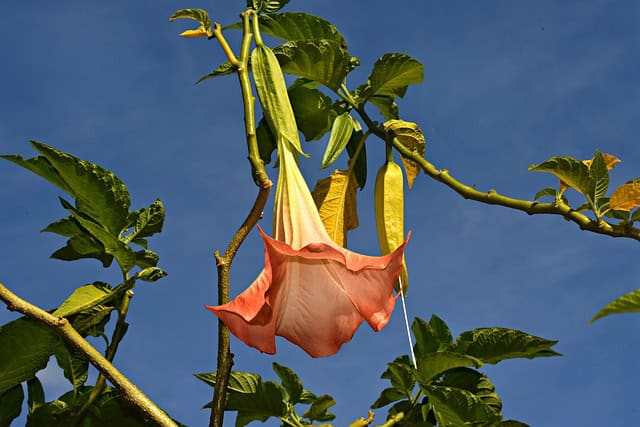
To kick-start our exploration, we should talk about the showy Angel’s Trumpet (Brugmansia). Known for its dramatic, trumpet-shaped flowers that can range from pale orange to deep coral, these shrubs are sure to mesmerize anyone who sets eyes on them. They can grow quite large, reaching heights of up to 10 feet, creating a stunning focal point in any garden.
Angel’s Trumpet is treasured not only for its striking appearance but also for its intoxicating fragrance, particularly in the evenings when the flowers bloom fully. Although it thrives best in warmer climates, it can also be grown as an annual in cooler areas. Offering elegance to landscapes, gardeners should ensure that these beauties are placed in well-drained soil and receive full sun to promote healthy growth and vibrant blooms.
Cigar Plant (Cuphea ignea)

The Cigar Plant (Cuphea ignea) is a delightful addition to the garden with its tubular orange flowers resembling tiny cigars, a name that speaks to its unique form. This shrub attracts hummingbirds and butterflies, adding life and movement to your outdoor space.
Cigar Plants are relatively low-maintenance and can easily fit into mixed borders or perennial gardens. They prefer well-drained soil and moderate watering, typically thriving in full sun conditions. The best part? They bloom continuously from spring until the first frost, providing an enduring color display that’s hard to beat.
Firethorns
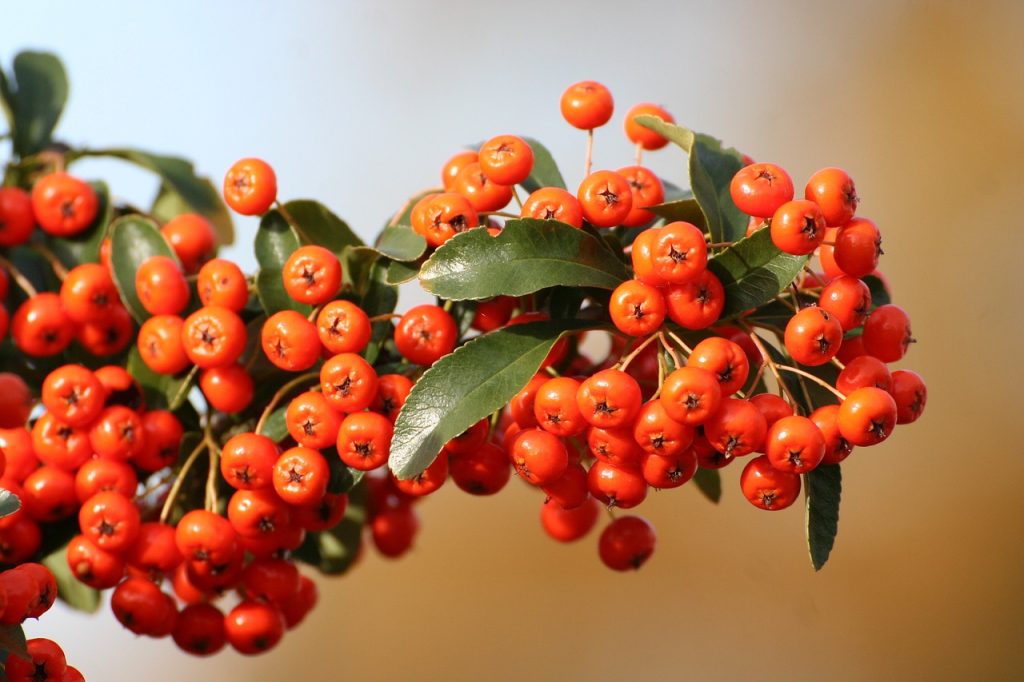
Fittingly named, Firethorn (Pyracantha) boasts clusters of bright orange berries that brighten the landscape as much as the flowers themselves. This versatile shrub can rapidly reach a height of 6-10 feet, making it perfect for hedging or sprawling across a trellis.
Firethorn thrives in full sun to partial shade, and its dense growth makes it an excellent choice for wildlife gardens, as the berries serve as food for birds throughout the winter. Its adaptability to various soil types, along with its resistance to drought once established, ensures that it remains vibrant even in challenging conditions. However, gardeners should handle this shrub with care due to its sharp thorns.
Flame Azalea

The Flame Azalea (Rhododendron calendulaceum) steals the show in late spring with its brilliant clusters of orange flowers. This deciduous shrub often reaches 4-6 feet in height and is perfect for woodland gardens or naturalized areas.
What sets this azalea apart is not just its fiery blossoms but also its toleration of acid soils, making it a solid option for the well-draining, acidic conditions many native plants prefer. With proper care and partial shade, the Flame Azalea will put on a stunning display, inviting admiration from visitors while supporting local ecosystems.
Orange Hibiscus
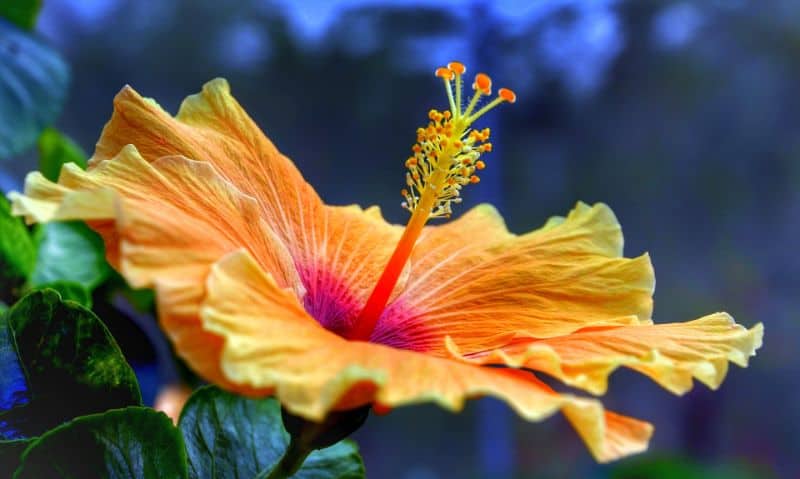
Just as gorgeous as the classic hibiscus, the Hibiscus Rose is known for its rich orange hue with a dramatic flair. The flowers are typically large and bold, making them excellent specimens for eye-catching focal points in any flowerbed.
Growing in full sun with adequately moist soil ensures vibrant color and healthy growth. This shrub can also serve as a backdrop to other vibrant flowers, creating a harmonic mélange that adds depth to any garden.
Lantana

Lantana is a much-loved flowering shrub renowned for its clusters of floral blooms which often feature citrusy shades. While orange is the focus here, Lantana often blooms with a stunning gradient effect, creating a visual treat in gardens.
Lantanas are hardy and drought-resistant, thriving in various soil types and performing exceptionally well in full sun. This versatile plant will attract butterflies and other pollinators, creating an engaging outdoor experience while enhancing pollinator habitat.
Lion’s Tail (Leonotis leonurus)
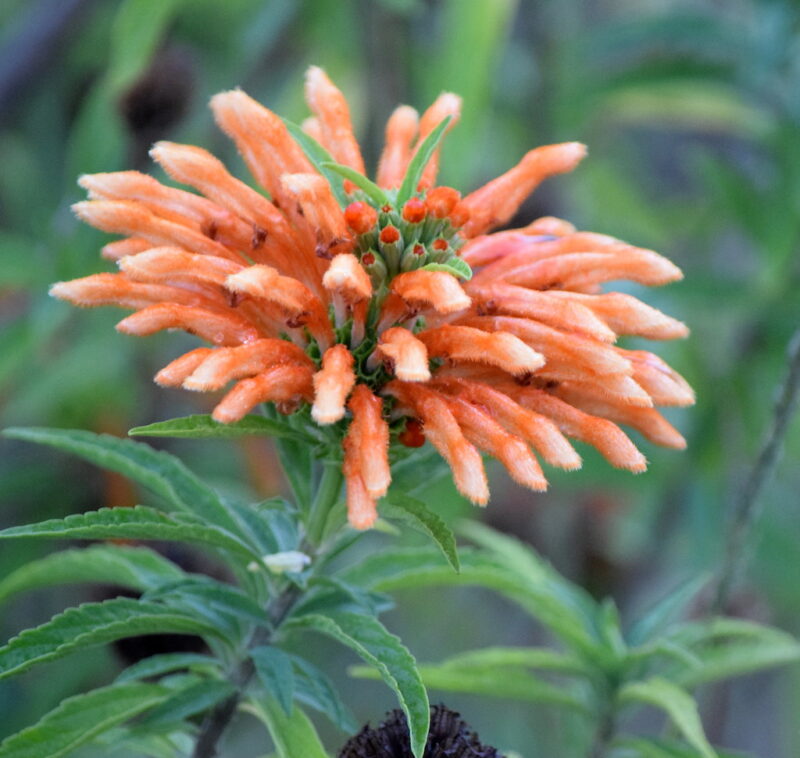
The Lion’s Tail (Leonotis leonurus) is an eye-catching shrub with vibrant orange tubular flowers that attract bees and butterflies, making it another great choice for pollinator gardens. This shrub can grow quite tall, reaching heights of up to 6 feet.
Lion’s Tail grows best in well-drained soils and tolerates drought, making it a perfect candidate for low-maintenance gardens. Its lush green foliage and vibrant blooms provide a striking appearance, bursting with character wherever it is planted.
Bird of Paradise
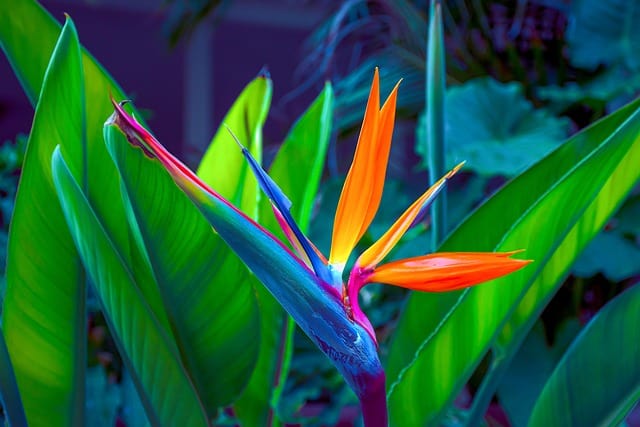
One of the most dramatic flowering shrubs, the Bird of Paradise (Strelitzia reginae), brings an exotic flair to any garden. Featuring a plume of orange and blue flowers that resemble the bird it’s named after, this powerfully colorful shrub is a real head-turner.
Bird of Paradise thrives in warmer climates and requires a sunny location paired with excellent drainage. While a slow grower at first, its tropical appearance makes the wait worthwhile, rewarding the patient gardener with spectacular blossoms.
Mexican Sunflower

The Mexican Sunflower (Tithonia rotundifolia) is a bright orange perennial that thrives in full sunlight. Its sunburst blooms draw in bees and butterflies, creating a lively scene in your garden.
This easy-going plant is also drought-tolerant and can thrive in poor soil conditions, making it an excellent choice for gardeners seeking low-maintenance options. Mexican Sunflowers can blend beautifully with other summer flowers, ensuring your garden remains vibrant throughout the growing season.
Noisette Rose
The Noisette Rose features lovely clusters of orange-yellow blooms, making it a charming addition to any garden. Historically significant for its hardiness and continued blooming, this rose variety is a favorite among seasoned gardeners and novices alike.
These shrubs flourish in full sun and well-drained soil, and they offer fragrance alongside visual beauty. Ideal for climbing or climbing over fences, they create a romantic ambiance in any outdoor space.
Orange Azalea
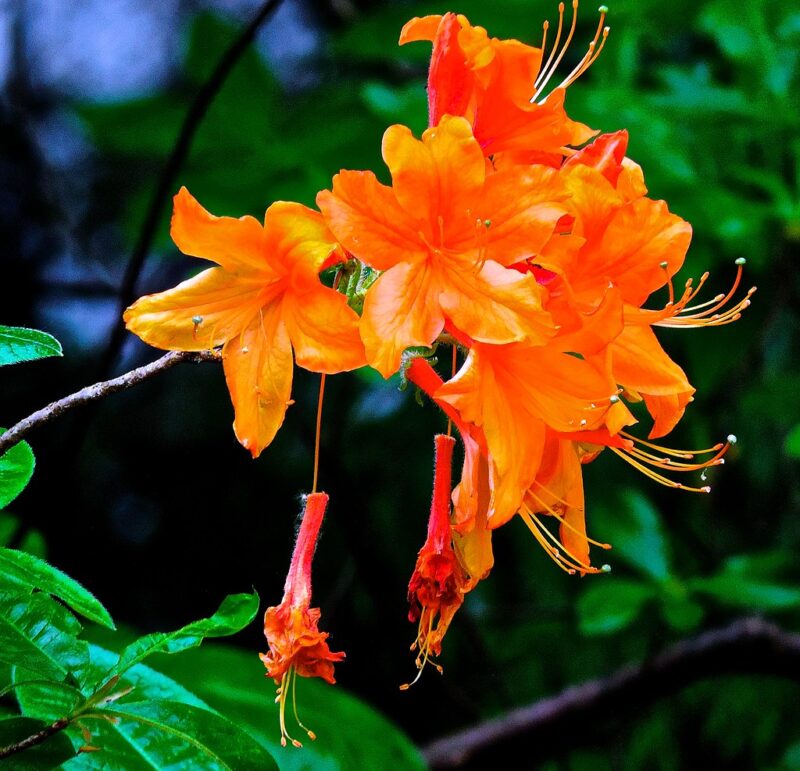
No list of orange flowering shrubs would be complete without the stunning Orange Azalea (Rhododendron spp.). This variety features abundant clusters of fiery-orange blooms in the spring, turning any garden into a visual feast.
Growing best in partial shade with acidic, well-drained soil, Orange Azaleas require minimal maintenance. Their dazzling display is sure to capture the attention of anyone passing by, inviting admiration and a closer look.
Orange Butterfly Bush
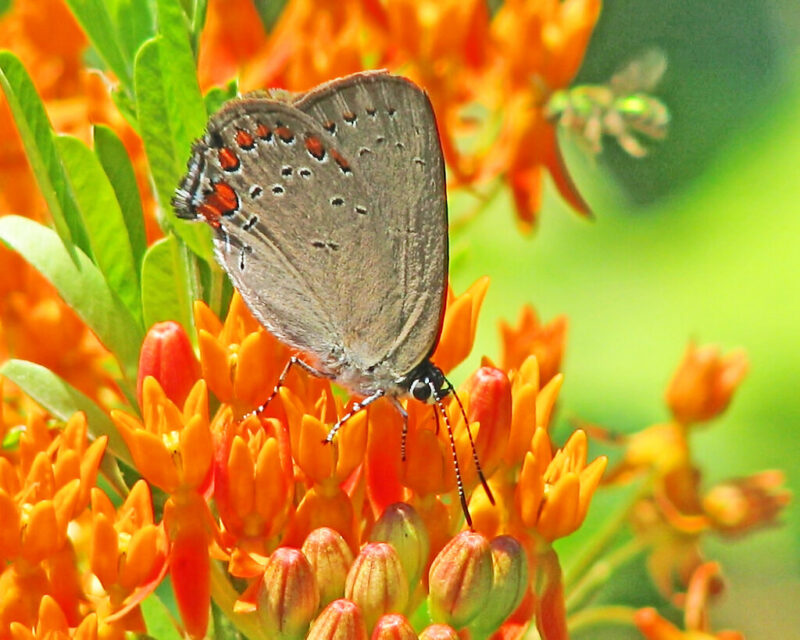
The Orange Butterfly Bush (Buddleja davidii) is a pollinator’s dream thanks to its dense clusters of vivid orange flowers. It’s no wonder butterflies and hummingbirds flock to it, drawn by the allure of its nectar-rich blooms.
This adaptable shrub can thrive in a variety of soil types and prefers full sun. It can be a sprawling beauty, reaching up to 10 feet long if left unpruned. Those who enjoy wildlife garden benefits will find that planting an Orange Butterfly Bush not only brings beauty but aids in attracting necessary pollinators.
Orange King Bougainvillea

The Orange King Bougainvillea is a spectacular vine that produces clusters of orange bracts that are often mistaken for flowers. These vibrant clusters can burst forth in profusion, bringing an exotic feel to any outdoor space.
Bougainvillea thrives in full sun and well-drained soil. Once established, it exhibits impressive drought resilience, requiring minimal water. Its sprawling growth can add a touch of whimsy to fences and walls, making it an enchanting addition to any garden.
Orange Peel

The Orange Peel (Freesia) is celebrated for its unique, fragrance-rich blossoms that open wide and unfold like delicate cups. While it may not be a traditional shrub, its lush foliage and cluster of orange flowers create an appeal worth mentioning.
These plants flourish in well-drained, sunny positions. Great for container gardening or as part of a mixed flower bed, the Orange Peel provides a youthful joy, encouraging interaction and admiration from garden visitors.
Orange Storm
The Orange Storm (Rosa ‘Orange Storm’) stands out among ornamental shrubs due to its distinctive blooms, rich orange roses with a hint of pink. This floral display is not only visually stunning but also fragrant, bringing sensory delight to your garden.
These roses thrive best in full sun and prefer well-draining soil. Regular pruning and care will ensure robust growth and abundant blooms throughout the gardening season, allowing you to enjoy their beauty for years to come.
Painted Abutilon
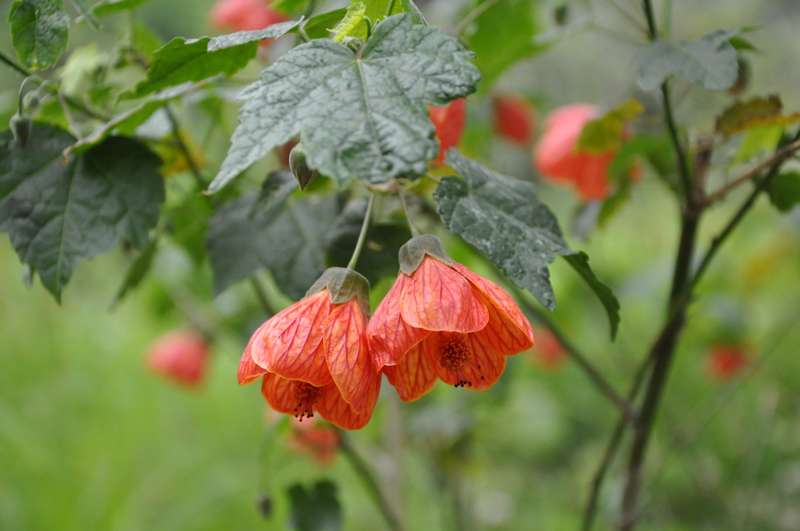
Yes, the Painted Abutilon (Abutilon hybridum) deserves a place on our list! With its lantern-like blooms showcasing stunning orange hues, it brings a playful look to gardens.
This shrub flourishes in both pots and landscape beds, preferring partial sun and regular watering. Its sprawling nature allows it to fit well into borders or hang gracefully over edges, beckoning garden visitors to stop and admire the creativity of nature.
Orange Pincushion Protea
The Pincushion Protea (Leucospermum) opens to reveal stunning flower heads with a striking resemblance to pincushions adorned with orange-tipped stamens. This unique flower can turn any garden into a spectacular display.
They thrive in well-drained, sandy soils and need full sun for optimal blossoming. The splendid shades of orange combined with the appealing shape create a shrub that is not only functional in attracting birds but also a stunning focal point.
Pomegranate Tree with Orange Flowers
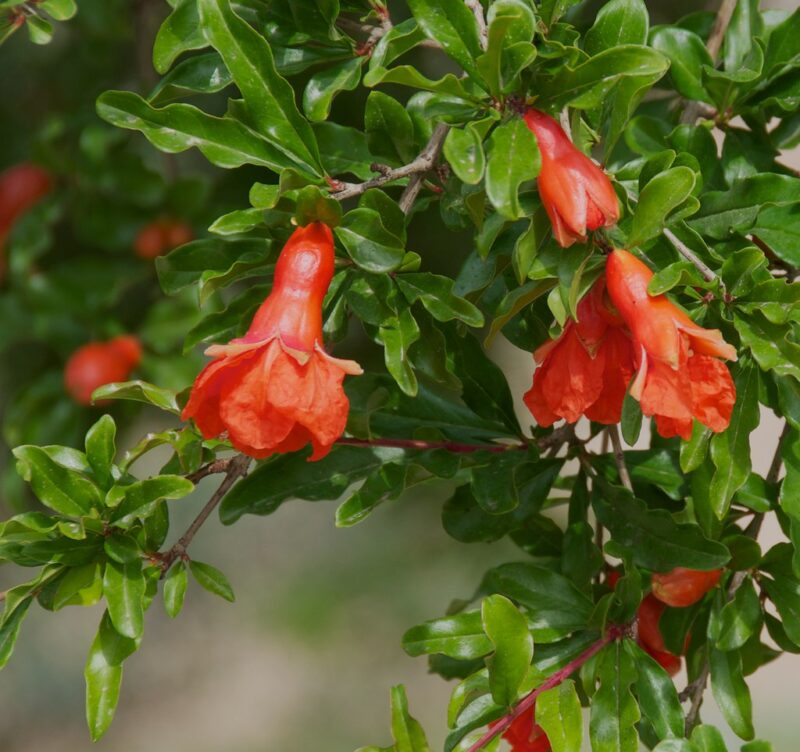
While primarily known for its fruit, the Pomegranate shrub (Punica granatum) has beautiful orange-red flowers that form before fruit development, creating an appealing visual during the blooming season.
Pomegranate plants thrive in hot, sunny areas and are relatively unsophisticated about soil types as long as drainage is adequate. These shrubs are drought-tolerant once established, making them a practical yet stunning addition to gardens and landscapes.
Orange Potentilla
The Potentilla (Potentilla fruticosa) offers a bouquet of brilliant orange flowers throughout the summer, adding continuous color to any landscape. This shrub can achieve a height of 2-4 feet, blending seamlessly with other perennials.
Potentilla is incredibly hardy and adaptable to various soils, thriving in full sun or partial shade. Their resilience and cheerful appearance make them a popular choice for garden beds, borders, or even in mixed landscaping designs.
Rosa Westerland

The Rosa Westerland is a highly fragrant, ornamental rose with clusters of orange blooms that spill over in a delightful fashion. This cultivar is often admired for its robust health and resistance to common plant diseases.
Westerland roses require full sun for optimum blooming conditions and benefit from well-drained soil. Regular deadheading can encourage larger, more abundant flowers while allowing for a bounteous display throughout the growing season.
Orange Scotch Broom (Cytisus scoparius)
For gardeners looking for a stunning ground cover, the Scotch Broom (Cytisus scoparius) offers flamboyant orange flowers that bloom profusely in spring. Its shrubby form can range from 3-10 feet tall, providing coverage and color to garden spaces.
With a preference for full sun and lean, well-drained soils, Scotch Broom is drought-tolerant and incredibly hardy. Beyond its ornamental character, this shrub also plays a part in preventing soil erosion, adding functional benefits to its beauty.
Witch Hazel
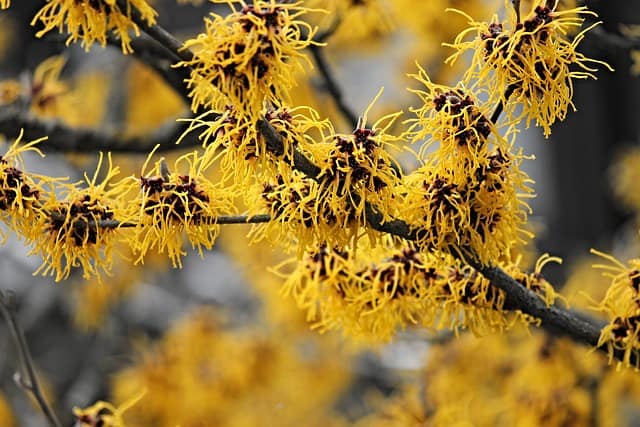
Ending our journey through the captivating world of orange flowering shrubs is the enchanting Witch Hazel (Hamamelis). This shrub offers unique, ribbon-like flowers that unfurl early in spring, showcasing orange tones amidst the winter-weary landscape.
Witch hazel prefers well-drained soil and thrives in areas with partial shade. Its late bloom brings a charming allure to gardens, marking a seasonal transition just as spring begins to awaken.










